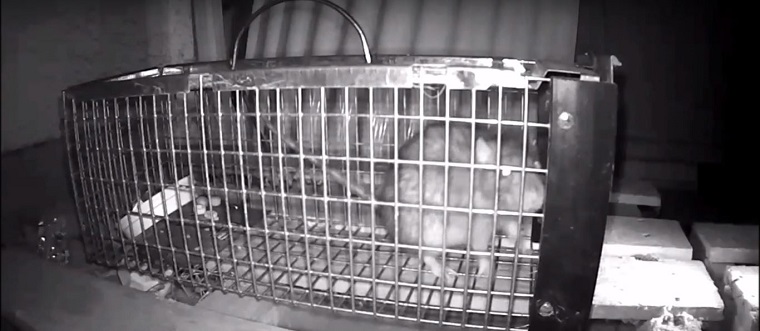Types of Rat Traps
1. Rat Snap Traps. One of the most common traps is the rat snap traps. Over the years, it has been developed and improved. It used to be made of wood but today, it is made of plastic or steel that is easier to set. It is more on the cheap side and it will literally kill a rat in a snap. Keep in mind that a rat snap trap’s spring can sometimes be very strong that accidentally touching it will break your finger. It is best to place it where it is unreachable by your pets and children.
2. Glue Traps. Rats are smart creatures and they will know traps. Glue traps are less conspicuous so they have a higher chance of trapping rodents. Also, glue traps are cheaper than snap traps. The only downside is that you need to put them in a dry and dust-free space. Dust and moisture can weaken the sticky effect of glue traps and they won’t be as effective.
3. Live Animal Traps. Although this kind of trap is a little bit expensive, it is the most humane method to get rid of rodents. They work by luring rat with food inside the cage and trapping them inside once they take the bait. You can then set them free outside far away.
 Where to Set Up Rat Traps
Where to Set Up Rat Traps
There are many considerations in setting a rat trap. Depending on the kind of trap you have, the location varies. Generally, you should keep traps out of children’s reach but still near areas where rats enter or frequent.
When to Set Up Rat Traps
Rat traps are considered as an option or alternative to stronger methods of getting rid of rodents. Use them if:
- Rat poison poses potential danger to family members especially if you have children at home.
- Rat infestation isn’t as severe. If there are only a few instances of rat presence, a rat trap is a better option. You don’t actually need poison to get rid of a single rat.
- Rats are “bait shy”. Sometimes, rats can figure out if you are trying to poison them. So, rat traps will likely be more effective.
Post-Trap Etiquette
1. Always ensure your safety first when using rat traps. If a rat is trapped, dispose it together with the trap while using gloves to prevent contamination and possible disease threats.
2. As much as possible, never re-use traps, especially glue traps and snap traps.
3. If needed, replace rat traps and check them daily. Do not let dead rats sit around for too long.
Advantages of Rat Traps
- Trapping is a safer alternative to getting rid of rats. They are less likely to affect children and pets.
- It can be a quick and humane way to get rid of small-time rat problems.
- Rat traps are manually placed and they hold a trapped rat so it’s easy for you to locate them and dispose them as soon as possible.
Disadvantages of Rat Traps
- Trapping isn’t for severe rat infestation. They can be time-consuming and require a lot of labor.
- They aren’t as effective as poison baits if you are trying to extinguish a handful of rats.
- Other rat traps can also be dangerous even to people.
Rat Trap Tips and Rules
1. The most important rule in using rat traps is to use as many as possible. Using just one rat trap is not effective and it is laborious.
2. Know the difference between rats and mice. Mice are smaller so they need smaller mouse traps. Rats are bigger so they need more heavy-duty traps.
3. Identify the entry point of rats and where they mostly
frequent in your house. Once you have a good grasp of these locations, place
your traps around the area for more effectiveness.
4. Space out rat traps around 15-20 feet apart. It is also advisable to place them along walls since rats are known to run around the edges.
5. Have a strategy of placing rat traps. If you place them along walls, make sure you place them in pairs so that when a rat comes in contact with one trap and figure it out the other trap will intercept the rat’s action.
6. You can also put traps on trees and roofs if there is a presence of roof rats.
7. Most of the time, rats can become trap-shy. Place unset rat traps in the areas where you plan to put them so as to make rats get used to it and they don’t shy away from it once you decide to set them up.
Go back to the
How to Kill Rats page.